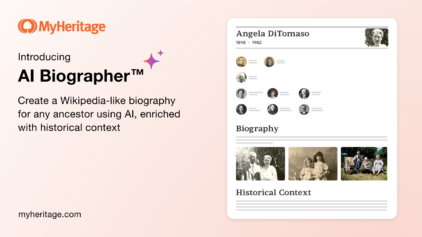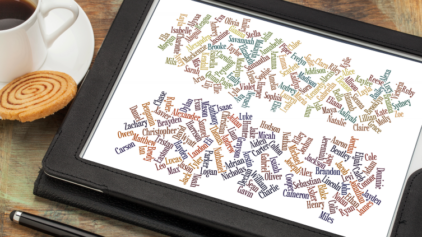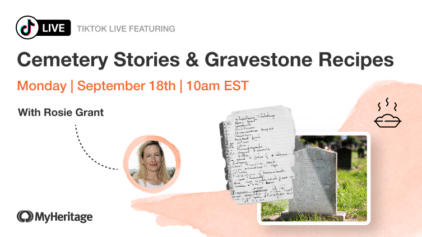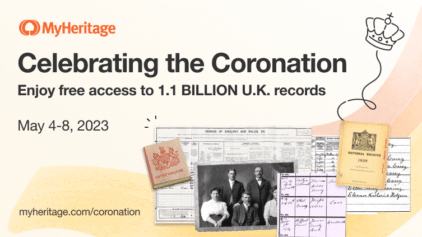Thanks for letting us know Susan!
We’ll definitely be there


The recollections of family members, and the photos and documents they hold, provide a wealth of invaluable family history information. Always consider interviewing older relatives first as they will usually know more about the earlier generations of your family and, unless their knowledge is well documented before they die or their memory fades, then that information may be lost forever. Your relative may be the only person who knows from which country and town your immigrant ancestors came, additionally, if their family name was different in earlier generations, it most likely that your eldest relatives would know the original name.
Here are some tips that I hope you will find useful when you planning to interview members of your family:
1. Prepare. Be clear about your objectives. What type of information are you seeking? About which branch of the family? Take a camera – you may want to take a photograph of your relative and also, maybe, take photographs of any documents or artefacts that they show you.
2. Create a list of questions or topics to cover. The exact questions will depend on how well you know the relative and their branch of the family. Try to order the questions so that they start with the relative’s close family and then they should work outwards to more distant relatives. So start with questions about their children, siblings, and parents. Then try to order the questions so that the questions move backwards in time, to their grandparents and great grandparents. Don’t forget to include questions about other relatives that they have (eg aunts, uncles, cousins) who may not be direct ancestors.
3. Decide how to record the interview. Will you be taking notes? Can you use a portable voice recorder or even a video recorder, or will your relative consider these too intrusive?
4. Call ahead. Always arrange time and location that is convenient for your relative. Try to allow plenty of time – it always takes longer than you think! Ask if they have any family photos, certificates or other items of family history that they could get out to show you when you meet up.
5. Start with a family photo. If they have found some photographs then start the interview by discussing these. Otherwise use a family photograph that you have brought yourself as a way of starting the interview. Try to ensure that it contains one or more family members that the relative will recognise and is likely to want to talk about. Group wedding photos are usually ideal for this.
6. Make sure that most of the questions you ask are open ended. Use “open” questions like “Please tell me about Auntie …..” or “What do you remember about your grandmother?”. Don’t forget to ask if they have any interesting family stories. At a later stage in the interview you could use “closed” questions designed to illicit specific items of information, like “Where is your grandmother buried?”
7. Create part of the family tree together. If possible take with you part of the family tree that includes your relative. As new individuals are mentioned during the conversation then immediately add their name and basic details on to the tree. In this way your relative can see the tree growing, and it is easier for both you and your relative to work out who is related to whom. Offer to send them a neat updated copy of the family tree once you have added the new details that they have given you. Using family tree software, like Family Tree Builder, makes it very easy to update the family tree and to print it out again.
8. Guide the interview. You should be gently guiding the direction of the interview but don’t stick rigidly to your prepared list of topics and questions otherwise you are likely to miss some genealogical gems. If your relative tells you that their father was in the Army then you are likely to want to follow this up during the interview – even if it was not on your original list of questions. If you sense that your relative is uncomfortable talking about a particular topic or person then move quickly on to a different topic. You can always come back to that topic at a later time or date. Continuing to pursue a topic that they don’t really want to talk about leads, at best, to the interview offering minimal useful or additional information, and at worst the interview could come to an embarrassing and abrupt end. Make sure it is an enjoyable experience for both the person you are interviewing and yourself.
9. Leave something behind. Try to leave something appropriate. Maybe a copy of a family photo or a printed part of a family tree. Also leave your contact details at the end of the meeting, in case they remember anything else.
10. Actions when you get home. Immediately following the interview, ensure that you have labelled your original notes and any tapes with the names of the persons who were at the interview together with details of the date, time and place. If you have any audio or video tapes then type up a word-for-word transcript. If you have handwritten notes then consider if they need to be typed up or re-written in a clearer hand. Then extract the key genealogical details and add these to your family tree sheets or charts, ensuring that you also add appropriate details about the source of each item of information. Often this process will generate ideas for follow up research activities so make a list of these. Also identify any items that need to be clarified, maybe with a follow-up telephone call. Consider sending your relative part of the updated family tree including information that they provided during the interview. And, lastly, don’t forget a “Thank You” note as this will often generate an invitation for another meeting – so you can then ask all the questions that you did not have a chance to ask first time around!
I wish you success with your family interviews, and I hope that they unlock some interesting family stories and information for you.
If you have other tips on how to interview family members that have worked for you then please share them with the readers of this blog by adding them to the “Leave a comment” box at the bottom of this blog page.
Genealogy Tips & Techniques
Series #1
Laurence Harris
Genealogy Advisor – MyHeritage.com











Susan A. Kitchens
May 20, 2010
Great stuff! Want to use digital tools instead of tape? Please feel free to visit Family Oral History Using Digital Tools, where I talk of using 21st century equipment.
Right now I’m doing a series on different aspects of interviewing. Will add this to a roundup of interview guides I’ll be creating soon.
p.s. I’ll be talking about interviewing family at the Southern California Genealogy Society’s Jamboree in Burbank next month.